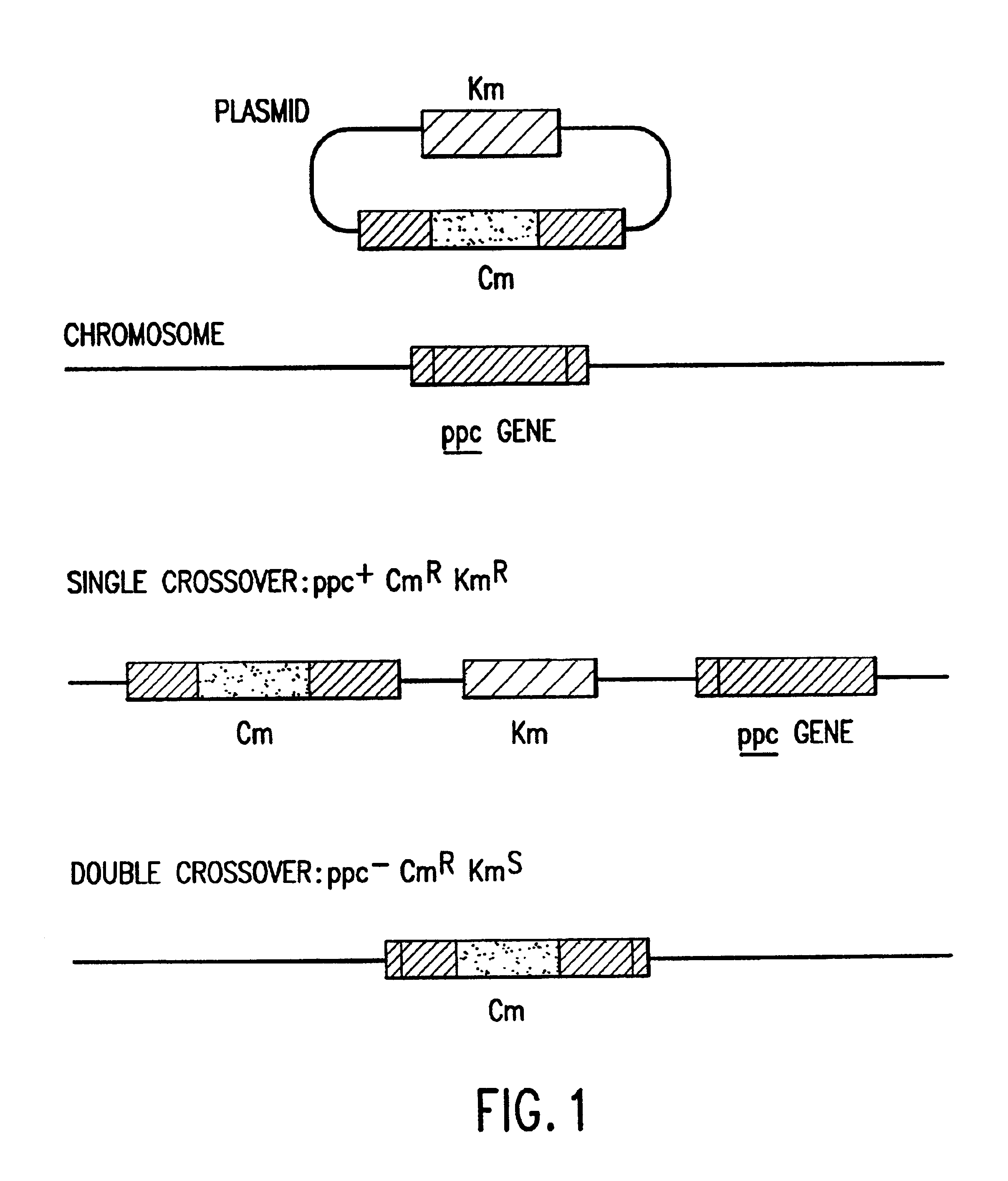Regulation of carbon assimilation
- Summary
- Abstract
- Description
- Claims
- Application Information
AI Technical Summary
Benefits of technology
Problems solved by technology
Method used
Image
Examples
example 1
A Plant ppc Gene Functions in Escherichia coli
[0097]The cDNA clone (APPC) of the ppc gene from alfalfa (Medicago sativa) was functional in the Escherichia coli mutant CGSC3594 which lacks a functional PEP carboxylase and cannot grow on M9 medium with glucose as the sole carbon source. When transformed with the APPC plasmid (pMS2), E. coli mutant CGSC3594 was able to grow on M9 medium with glucose as the sole carbon source. The DNA and amino acid sequences of the alfalfa PEP carboxylase are provided in SEQ ID NO:1 and SEQ ID NO:2, respectively.
example 2
The ppc Gene from Alfalfa Shows Growth Stimulation in Corynebacterium in Shake Flasks
[0098]The effect of the ppc gene from alfalfa (Medicago sativa) on growth stimulation in the lysine-producing Corynebacterium strain BF100 was determined. Growth was measured as the optical density at 660 nm, the titer was measured as g lysine / liter of medium, and the yield was measured as (g lysine / g glucose consumed)×100. 30 mg / L of isopropyl-beta-D-galactoside (IPTG), an inducer, was present. The results are shown in Table 1:
[0099]
TABLE 1StrainGrowthTiterYieldBF100252542BF100 / pMS2342340BF100 / pMS2 / IPTG402543
example 3
The ppc Gene from a Wild-Type Corynebacterium Strain Improves Productivity of a Lysine-Producing Corynebacterium Strain
[0100]The cDNA clone (CPPC) of the ppc gene from Corynebacterium glutamicum ATCC 13032 was inserted into the pCPPC plasmid. When lysine producing Corynebacterium glutamicum strain BF 100 was transformed with the pCPPC plasmid in shake flasks, the productivity was improved.
[0101]Growth was measured as the optical density at 660 nm, the titer was measured as g lysine / liter of medium, and the yield was measured as (g lysine / g glucose consumed)×100. The results are shown in Table 2:
[0102]
TABLE 2StrainGrowthTiterYieldBF100392744BF100 / pCPPC322948
PUM
| Property | Measurement | Unit |
|---|---|---|
| Fraction | aaaaa | aaaaa |
| Fraction | aaaaa | aaaaa |
| Fraction | aaaaa | aaaaa |
Abstract
Description
Claims
Application Information
 Login to View More
Login to View More - R&D
- Intellectual Property
- Life Sciences
- Materials
- Tech Scout
- Unparalleled Data Quality
- Higher Quality Content
- 60% Fewer Hallucinations
Browse by: Latest US Patents, China's latest patents, Technical Efficacy Thesaurus, Application Domain, Technology Topic, Popular Technical Reports.
© 2025 PatSnap. All rights reserved.Legal|Privacy policy|Modern Slavery Act Transparency Statement|Sitemap|About US| Contact US: help@patsnap.com

